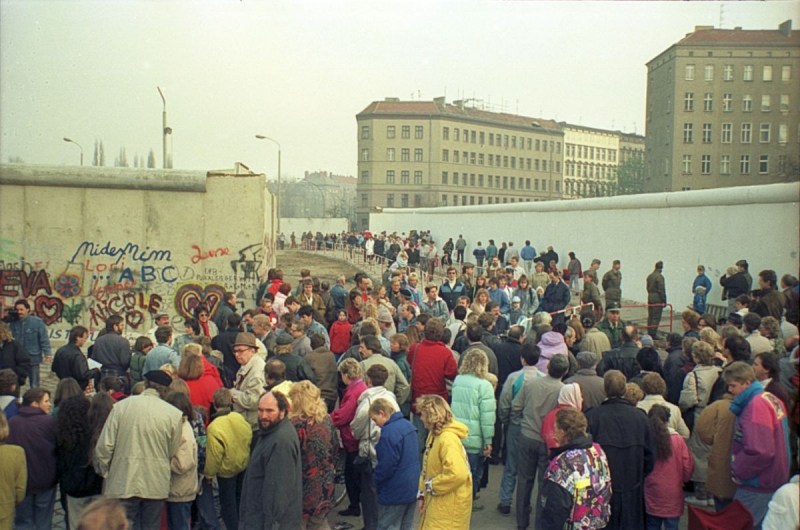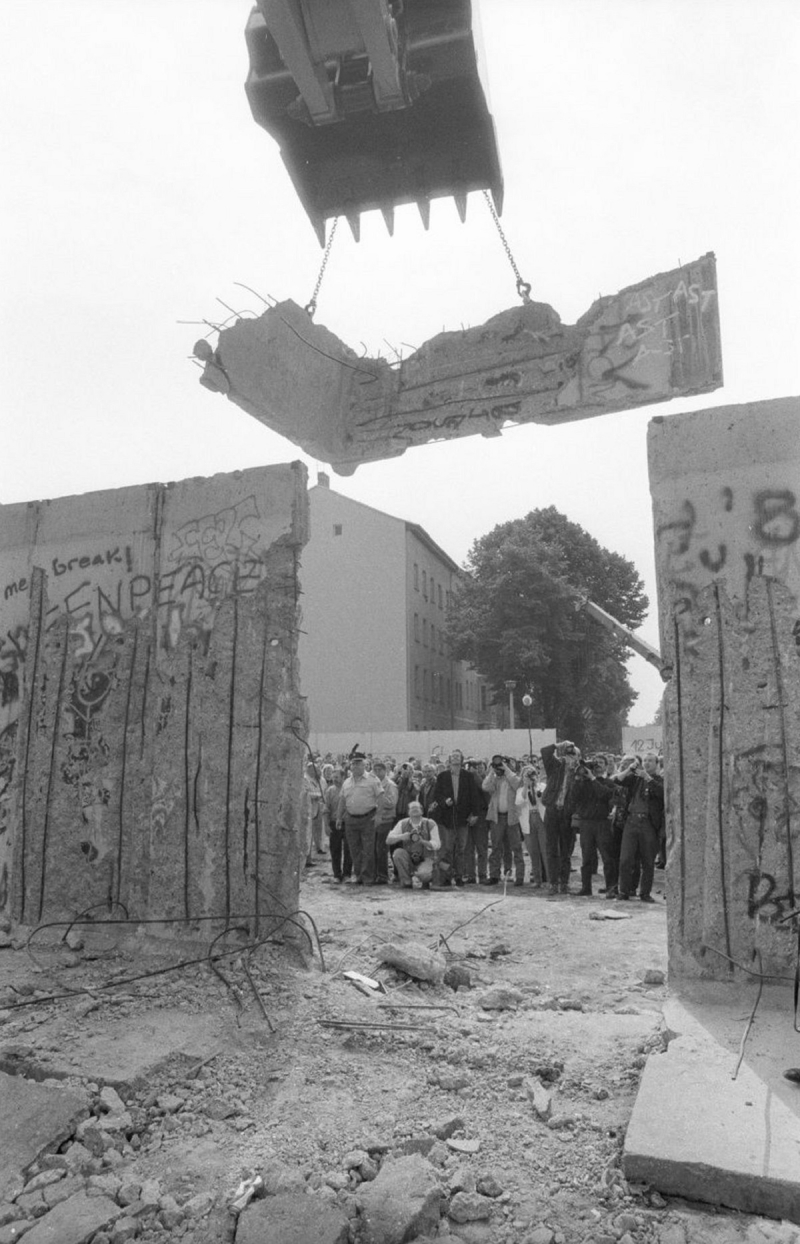Fall of the Berlin Wall
The Berlin Wall was continually expanded after August 13, 1961, but then, on November 9, 1989, it fell – completely unexpectedly. Several different factors led to the opening of the border: the demonstrations and protests against the East German leadership, the large numbers of people wanting to leave the country, and international developments, particularly in the Soviet Union.

People celebrate the fall of the Berlin Wall at the Brandenburg Gate on November 10, 1989. © Stiftung Berliner Mauer, Foto: Sebastian Fritsche
The East German leadership was reluctant to adopt the reform course that the Soviet Union had introduced in 1985. The broad protest movement and growing refugee movement in East Germany caused the dictatorship to collapse in 1989. The East German leadership was forced to make concessions, such as granting more travel freedom to its citizens.
On the evening of November 9, 1989, the East German government finally announced its new travel regulations. Thousands of East Berliners spontaneously rushed to the border crossings and forced the Wall to be opened. That night, thousands took advantage of the opportunity to visit the west side of the city.

Crowds at the Eberswalder Strasse border crossing on November 10, 1989. © Stiftung Berliner Mauer, Foto: Jürgen Bredthauer
Soon more border crossings were needed to handle the onslaught of people crossing the border. On the night of November 10, an opening was made in the Wall at the corner of Eberswalder Strasse and Oderberger Strasse – about 1 kilometer from here – and the first new border crossing was created.
After the border opened, almost the entire Wall was taken down. But on Bernauer Strasse, at the site of the Berlin Wall Memorial, a long section of the border wall and several relics from the border fortifications have been preserved.
October 3 – Day of German Unity
The fall of the Berlin Wall led to the end of more than forty years of division and to the reunification of Germany. In the West in early 1990, the chancellor of West Germany, Helmut Kohl, had already begun to speak out in favor of rapid “reunification.” The majority of the population in East Germany was also calling for unity. However, this required the approval of the Four Powers of the Second World War (USA, Soviet Union, France and Great Britain). In the following months, negotiations took place between the first freely elected East German government and the government of the Federal Republic (West Germany) as well as with the Allies and the Soviet Union over how to achieve a reunified Germany. The Four Powers eventually agreed to reunification in September 1990 in the “Two Plus Four Treaty.” The process of German reunification was officially completed on October 3, 1990. This day was declared a German national holiday and is celebrated each year.

Hundreds of thousands of Berliners, guests and representatives of the Federal Republic of Germany and the GDR celebrate German reunification at the Reichstag in Berlin on October 3, 1990. © Stiftung Berliner Mauer, Foto: Sebastian Fritsche
Zeitzeuginnen und Zeitzeugen über den Mauerfall
The interviews can also be seen in the exhibition The Berlin Wall. A World Divided. © Stiftung Berliner Mauer

Elske Hildebrandt was 15 years old when the Wall fell. She and her family lived right next to the Wall for years. The fall of the Wall came as a surprise to her. For a long time she thought that she would only be able to visit the West as an old woman, if at all. After the fall of the Wall, she became involved with the Social Democratic Party in the GDR as a teenager. Today she is a politician and a member of the Brandenburg state parliament.

Martin Cartolano-Löffler lived in Anklamer Strasse in 1989 and experienced the events of November 9, 1989 first-hand. At the time, he was a home educator in a children's and youth home in Prenzlauer Berg and studied home education at the Institute for Teacher Training in Berlin-Köpenick. After the fall of the Berlin Wall, he continued his education and worked in the social sector in West Berlin.

M. G. experiences November 9, 1989 as a border guard. He was on night duty at Gartenstrasse and Ackerstrasse that evening. He had been drafted into military service that same year and was assigned to the border troops at the Berlin Wall. He was discharged early on January 30, 1990.


